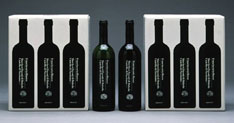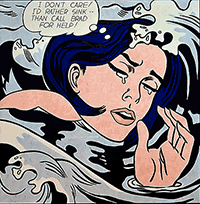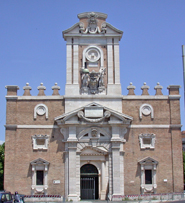| The Beginning of the End of the Modern Style | |||
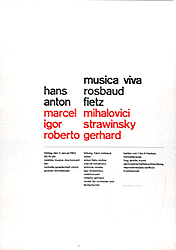 Joseph Muller-Brockman 1962 |
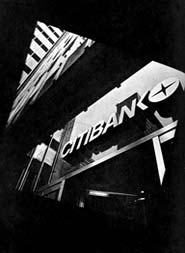 |
 |
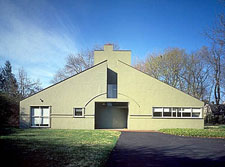 |
The International Style In Switzerland, just after World War II, elements of Futurism, Constructivism and the Bauhaus were distilled into a utopian system of grids, sans serif type and neutrality known as the International Style. The visual system was based upon the belief that the typography should be totally clear allowing no distraction from the content.
|
The Corporate Takeover of American Modernism |
Reactions to Modernism A movement that blurred the lines between art, commerce and popular culture. After the large-scale pop art exhibition at the Sidney Janis Gallery in New York in 1962, Pop Art established itself as a serious, recognized form of art. This exhibition became a turning point for Modernism when a series of critics foresaw the end of modernism and the beginning of the postmodern era.
|
Post Modern Architecture The term Postmodernism originated in an international architectural movement that emerged in the 1960's. The movement largely has been a reaction to the orthodoxy, austerity, and formal absolutism of the International Style. The practitioners of postmodern architecture tended to reemphasize elements of metaphor, symbol, and content in their credos and their work. They share an interest in mass, surface colors, and textures and frequently use unorthodox building materials. Robert Venturi and Denise Scott Brown realized the first post -modern structure in suburban Philadelphia in 1961. (above) They used the vernacular elements of chimney and arched doorway to signify a traditional home environment.
"In addition to the immediacy of its unique formal and functional qualities, the house is rich in references to historic architecture. The monumental street facade alludes to Michelangelo's Porta Pia in Rome (above) and the back wall of the Nymphaeum at Palladio and Alessandro Vittoria's Villa Barbaro at Maser. On the other hand, the broken pediment recalls the 'duality' of the facade of Luigi Moretti's apartment house on the Via Parioli in Rome." 3 |
| Footnotes | |||
| 1 AIGA Archives on-line |
2 |
3 Great Buildings .com Link |
|
| Copyrights | |||
| ©Designhistory.org 2011 | |||

